Broadway: The American Musical Blu-ray Movie
HomeBroadway: The American Musical Blu-ray Movie 
PBS | 2004 | 343 min | Not rated | Oct 16, 2012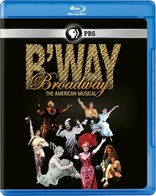
Movie rating
6.4 | / 10 |
Blu-ray rating
| Users | 0.0 | |
| Reviewer | 4.0 | |
| Overall | 4.0 |
Overview
Broadway: The American Musical (2004)
BROADWAY: THE AMERICAN MUSICAL is the first documentary film to showcase the entire razzle-dazzle story of this uniquely American art form. Each episode explores a different era in American musical theatre, spotlighting the Broadway shows and songs that defined that period. Featuring on-camera interviews with many of the principals involved in the development of the medium, the series draws on a wealth of rare performance footage and newly-restored clips. Hosted by Julie Andrews, the six-part series offers the best seat in the house to the greatest Broadway shows of all time.
Starring: Julie Andrews, John Lahr, Stephen Sondheim, Philip Furia, Brendan GillDirector: Michael Kantor
| Musical | Uncertain |
| Documentary | Uncertain |
| History | Uncertain |
Specifications
Video
Video codec: MPEG-4 AVC
Video resolution: 1080p
Aspect ratio: 1.78:1
Original aspect ratio: 1.78:1
Audio
English: LPCM 2.0
Subtitles
English
Discs
50GB Blu-ray Disc
Three-disc set (3 BDs)
Playback
Region A (B, C untested)
Review
Rating summary
| Movie | 4.5 | |
| Video | 3.5 | |
| Audio | 3.5 | |
| Extras | 4.0 | |
| Overall | 4.0 |
Broadway: The American Musical Blu-ray Movie Review
Six hours of jazz hands.
Reviewed by Brian Orndorf October 27, 2012“Broadway: The American Musical” is a 2004 PBS series that endeavors to compact a history of musical theater into a documentary that’s a mere six hours in length. It’s quite a task considering the extensive list of productions that have graced the heavily lit area, a few hanging around for years after opening. Director Michael Kantor is ambitious, but delightfully so, displaying unexpected confidence with his assembly of industry highs and lows, using his secret weapon, host Julie Andrews, to distract from a few gaps in the timeline. It’s a colorful, tightly edited series with a healthy sense of humor, a dash of backstage venom, and a jubilant sense of Broadway expansion, bringing viewers into the thick of the creativity that fuels these big shows, using interviews with key industry players to carry the narrative along. “Broadway: The American Musical” actually covers quite a bit of ground over the relatively short run time, communicating a deep appreciation for the shows of yesteryear, while processing the “current” state of the razzle-dazzle union with honesty and a little pinch of hope.
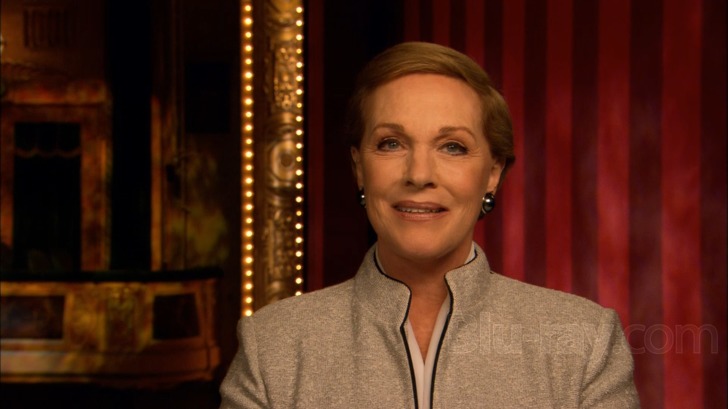
Disc 1:
“Give My Regards to Broadway (1893-1927)” (57:09, Airdate – 10/19/2004)
Our journey begins in the New Amsterdam Theater, where host Julie Andrews takes us back to the late 1800s to greet a young man named Florenz Ziegfeld Jr., who came to New York City with an idea for mass entertainment. At the time, Broadway largely consisted of minstrel shows, comedies, and European Operettas, providing an opportunity for Ziegfeld to capture attention with his legendary Ziegfeld Follies, populated with his risqué collection of Ziegfeld Girls. In 1904, the birth of Times Square and the start of the subway system brought crowds to the area, where George M. Cohan (and his insatiable stage energy) began his rise to fame, working the growing popularity of Vaudeville. Breaking the tradition of minstrel acts, Bert Williams became the rare African-American to participate in blackface, using the gimmick to supply a unique social commentary through his music. The arrival of Irving Berlin and his time on Tin Pan Alley is discussed, along with a portrait of Fanny Brice, who rode her unusual looks and unparalleled talent to superstardom. When WWI hit in 1917, the mood of Broadway change from simple entertainment to patriotism, while a 1919 strike brought fresh power to the stage performers, who acquired a raise in pay while losing the burden of having to provide their own costumes. Finally, in 1927, Jerome Kern and Oscar Hammerstein’s “Show Boat” rocked the industry with its tonal severity and profound thematic reach, ushering in a new dawn for the concept of musical theater.
“Syncopated City (1919-1933)” (56:58, Airdate – 10/19/2004)
Moving over to the Schubert Theater, Andrews introduces us to the Jazz Age, where prohibition created a sense of lawless to New York City, with speakeasys littering the metropolis. The era also watched the rise of female-driven fantasies on stage, providing Cinderella stories to soothe the masses, with Marilynn Miller a popular star. Progression to musical revues made a celebrity out of Al Jolson, the self-proclaimed “World’s Greatest Entertainer.” While Jolson worked his blackface routine to eminence, his ego and insecurities were second to none. Eubie Blake’s musical “Shuffle Along” ushered in a new acceptance of black entertainers and stories, a celebration carrying over to Harlem nightclubs. For George White, dances were the key to national exposure, offering popular culture the likes of the Charleston, while George Gershwin rose from his routine on Tin Pan Alley to make a name for himself alongside brother Ira. With increasing cultural liberation, a Broadway lyrical code was popularized by journalist Walter Winchell, who gifted NYC with the enduring moniker, “The Big Apple.” The optimism of the era carried through the work of DeSylva, Brown, and Henderson, while Richard Rodgers and Lorenz Hart also made their mark in the industry. And the 1929 stock market crash brought woe to Broadway, watching as its brightest stars jumped ship to Hollywood for fame, fortune, and “western tans.”
Disc 2:
“I Got Plenty O’ Nuttin’ (1930-1942)” (56:58, Airdate – 10/20/2004)
Remaining at the Schubert Theater, Andrews discusses a time of frivolous stage pursuits that changed into solemnity, with “Brother Can You Spare a Dime?” a potent anthem for an ailing country, creating a resistance from the powers that be to tunes that reflected the dreary state of the nation. We meet Ethel Merman and her nuclear weapon of a voice, which catapulted her to instant fame. “Of Thee I Sing” gives Broadway a satirical edge, while the legacy of Ethel Waters and her haunting song “Supper Time” brought genuine emotional weight to the stage, altering the industry’s capacity for dramatics. Jubilance returns with Cole Porter, whose frothy wordplay carried him to prominence. George Gershwin’s folk opera “Porgy and Bess” left industry types stunned with its passion and detail, but failed to initially attract an audience. The establishment of the WPA during the Depression challenged the right of free speech, with the debut of “The Cradle Will Rock” a mischievous expansion of stage creativity and personal expression. The partnership of Rodgers and Hart hits a high with the challenging “Pal Joey,” and the commencement of WWII brings Irving Berlin’s valentine “This is the Army” to the forefront, returning patriotism to the stage.
“Oh, What a Beautiful Mornin’ (1943-1960)” (56:58, Airdate – 10/20/2004)
The Golden Age of Broadway commences with a celebration of Oscar Hammerstein and Richard Rodgers, a triumphant collaboration that began with “Oklahoma,” a musical that emphasized storytelling and intricate, dreamscape choreography by Agnes De Mille, “Oklahoma” was an unexpected smash hit, segueing into “Carousel,” with its challenging dramatic turns and rich performances. With “Annie Get Your Gun,” Irving Berlin returned to prominence, guiding star Ethel Merman to legend status with the show’s impressive string of hits, including the unofficial theme of Broadway, “There’s No Business Like Show Business.” Cole Porter’s “Kiss Me, Kate” also struck a chord during this era, revitalizing the composer’s popularity. After suffering a bomb with “Allegro,” Rodgers and Hammerstein roared back with “South Pacific,” finding the musical’s ideas on racial bigotry causing discomfort across America. With “Guys and Dolls,” Frank Loesser brought a raw street quality to the industry, while the advent of television viewing supplied an idea place of promotion for Broadway. The episode closes with Andrews herself, who recalls her time with Alan J. Lerner and Frederick Loewe on “My Fair Lady,” and the saga of “The Sound of Music” is recounted.
Disc 3
“Tradition (1957-1979)” (56:59, Airdate – 10/21/04)
With “West Side Story,” the merger of choreography and direction from Jerome Robbins created a combustible musical, hand symphonic throb by Leonard Bernstein. While the cultural tides were changing, a bit of old Broadway held on to popularity, finding “Fiddler on the Roof” an enormous hit, though one smashing headfirst into the rise of Beatlemania and a younger audience hunting for a generational representation on stage. “Hair” was the rock musical that truly shook up the industry, tilting traditions into a new direction, while “Cabaret” established a newfound interest in unorthodox presentations and atmosphere. Truly nonlinear storytelling was investigated in Stephen Sondheim’s “Company,” a musical that confounded critics and audiences, yet “A Chorus Line,” with its gritty sense of vocational perspective from Michael Bennett and Marvin Hamlisch, became a singular sensation. The rise of Bob Fosse is detailed, with special attention paid to “Chicago” and its revolutionary sense of style. Sondheim’s “Sweeney Todd” is also spotlighted as a daring production with darkness and grisliness to spare, offering horror to audiences accustomed to lighter fare. The episode closes out with an amusing look at a 1980 television tourism campaign utilizing players from the popular shows of the day.
“Putting it Together (1980-2004)” (57:30, Airdate 10/21/2004)
For a new dawn of Broadway musicals, risk is the key word. With costs rising and the producer count multiplying, a safety net of sorts is introduced, with more motion pictures being mined for source material, starting with “42nd Street,” proving its popularity with an eight-year run. Producer Cameron Mackintosh perfects another approach to mounting an average Broadway show, turning to London to work out the kinks on such monster hits as “Cats” and “Les Miserables.” Gay sensibility, arguably a defining trait of Broadway, becomes popular with “La Cage Aux Folles,” while the wrath of AIDS takes its toll on the industry during the 1980s. In the 1990s, Disney rises to power, with a Broadway inspiration and influence connecting filmed entertainment to stage shows including “Beauty and the Beast” and “The Lion King.” To accommodate these new family audiences and tourists, New York City works to clean up their act, scraping the sleaze off city streets, also urging people to return to theaters after the 9/11 terrorists attacks. Jonathan Larson and “Rent” is identified as a new breed of musical blockbuster, and “Wicked” is dissected as an example of a risky, expansive gamble, shipped to San Francisco before its Broadway debut.
Broadway: The American Musical Blu-ray Movie, Video Quality 
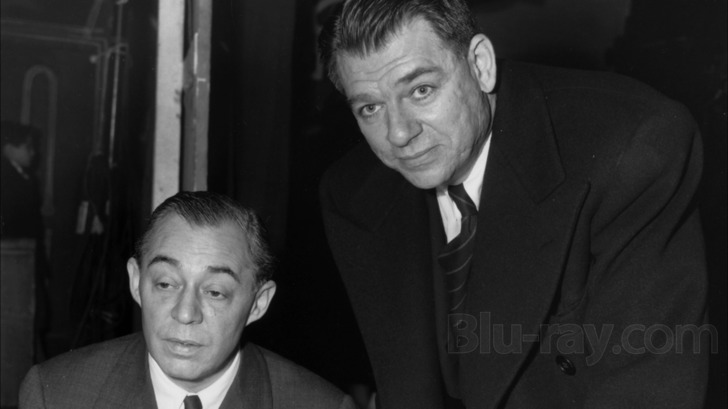
The AVC encoded image (1.78:1 aspect ratio) presentation has plenty to tackle, with the series built out of various film and video sources, wound together to bring Broadway history to the screen. Source material isn't always in the best shape (the production works with what it's been given), and interview footage registers a touch too soft, but the BD viewing experience manages the drastic changes in image quality satisfactorily. HD-shot material looks very nice, finding Andrews's host segments looking crisp and expressive, with wonderful facial and theater details to study. Colors are natural and stable, carrying a certain theatricality for marquee inspections. For a program that's nearly a decade old, the package is comfortable to watch, with only a small amount of banding and filtering detected. Shadow detail is adequate, while skintones are natural.
Broadway: The American Musical Blu-ray Movie, Audio Quality 
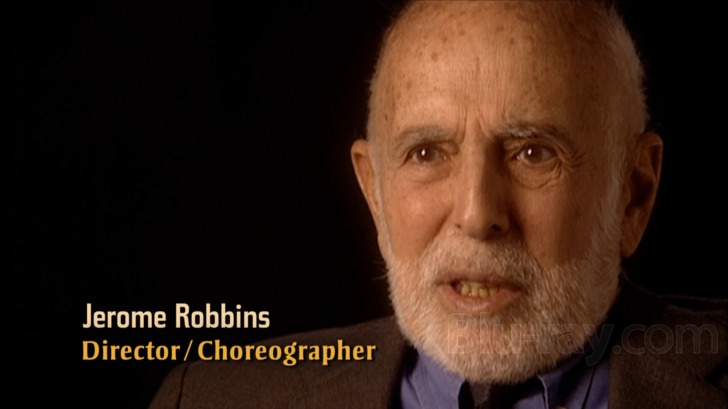
The 2.0 PCM sound mix is best valued for its fullness, a mighty achievement considering a large portion of the series details damaged footage of musical performances. Interviews are deep and stable, with an appreciation for personalities and accents, while Andrews's narration is crisp and authoritative, carrying the viewing experience with authority. The aforementioned braiding of film and video sources is gracefully handled on the track, rarely losing itself to outright shrillness and distortion. As a whole, the series doesn't lend itself to dimension, electing a frontal push that balances over three channels without irritation or unexpected fluctuation.
Broadway: The American Musical Blu-ray Movie, Special Features and Extras 
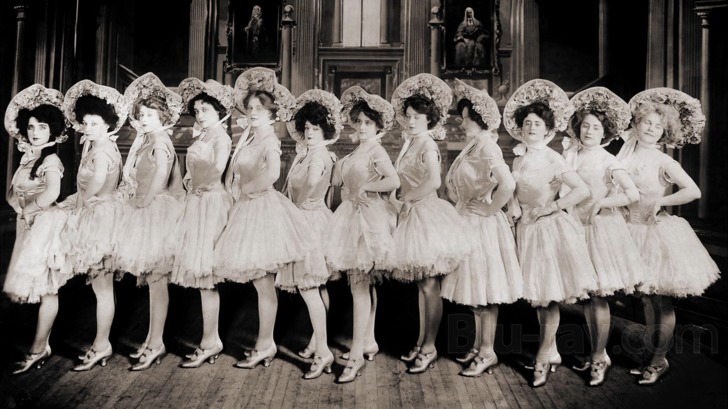
Disc 1:
- Additional Interviews (26:46, SD) further the Broadway conversation with Vincent Sardi, Jr., Kitty Carlisle Hart, Carol Channing, Michael Tilson Thomas, Jerry Herman, Mary Ellin Berlin Barrett, Fred Ebb, Doris Eaton Travis, Cameron Mackintosh, Frank Rich, Stephen Sondheim, Hal Prince, and Mel Brooks. Historical information, biographical commentary, and personal reflection ensue.
- Additional Performances (11:23, SD) provide Vaudeville selections, a Bill Robinson clip featured in the movie "Harlem is Heaven," and a moment from the 1929 picture "Glorifying the American Girl," featuring Eddie Cantor's Tailor Shop Routine.
- "Broadway Interviews" (80:15, SD) return with Al Hirschfeld, Kitty Carlisle Hart, Jerry Herman, John Lahr, Mary Rodgers Guettel, Cy Fever, Mary Ellin Berlin Barrett, Mel Brooks, Tim Robbins, Brendan Gill, Jo Sullivan Loesser, Fred Ebb, Richard Adler, Patricia Morison, Jerry Orbach, John Raitt, Peter Stone, Stephen Sondheim, Hal Prince, and Michael Tilson Thomas. Once again, the participants offer intimate memories on select shows, while philosophizing on the popularity of Broadway and its enduring creative spark.
- Additional Performances (19:09, SD) showcase a clip of "Hostess of the Stage Door Canteen," "If I Loved You" from "Carousel," and "Some Enchanted Evening" from "South Pacific."
- "Wicked: The Road to Broadway" (16:01, SD) is a featurette for the musical, detailing inspirations and the extended rehearsal process, using interviews with producers, cast members, and choreographers to assist in the creative exploration.
- "Broadway Interviews" (88:56, SD) serve up additional chats with Arthur Laurents, Jerry Herman, Carol Channing, Fred Ebb, John Kander, Andre De Shields, Joel Grey, Marvin Hamlisch, Donna McKechnie, Jerry Orbach, Chita Rivera, Peter Stone, Ben Vereen, Stephen Sondheim, Hal Prince, Al Hirschfeld, Harvey Fierstein, Mel Brooks, Cameron Mackintosh, Donna McKechnie, Frank Rich, and Gerald Schoenfeld.
- Additional Performances (22:52, SD) provide a peek at "Someone in a Tree" from "Pacific Overtures," Jonathan Larson's "Sunday," and "For Good" from "Wicked."
Broadway: The American Musical Blu-ray Movie, Overall Score and Recommendation 
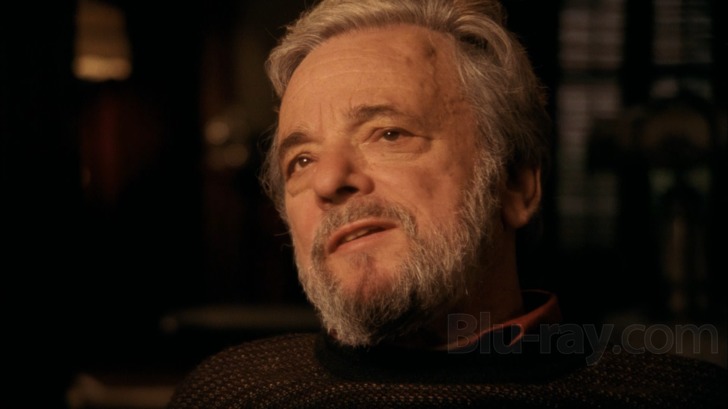
It's an impressive juggling act from Kantor, who's faced with egos, legends, and admirers, yet comes out the other side with a fair assessment of the industry, with its extensive history of trauma and triumph. "Broadway: The American Musical" flies by as it details all the backstage trivia and celebrates great performances and creative contributions, with every episode teeming with information, captured through the memories of those who were there, either on stage or seated enthusiastically the audience.
Similar titles
Similar titles you might also like

Godspell
1973

Jesus Christ Superstar: Live Arena Tour
2012

Cats
The Musical
1998

A Night at the Opera
Warner Archive Collection
1935

Jesus Christ Superstar
2000

Memphis: The Original Broadway Production
2011

Les Misérables in Concert: The 25th Anniversary
2010

That's Entertainment III
1994

That's Entertainment, Part 2
1976

Thoroughly Modern Millie
1967

That's Entertainment
50th Anniversary Remastered Edition | Warner Archive Collection
1974

Victor/Victoria: The Broadway Musical
1995

Broadway Melody of 1940
Warner Archive Collection
1940

How to Succeed in Business Without Really Trying
1967

Carousel
1956

The Slipper and the Rose: The Story of Cinderella
1976

1776
Director's Cut | Mastered in 4K
1972

Moulin Rouge
1928

Fame
1980

Jesus Christ Superstar
1973